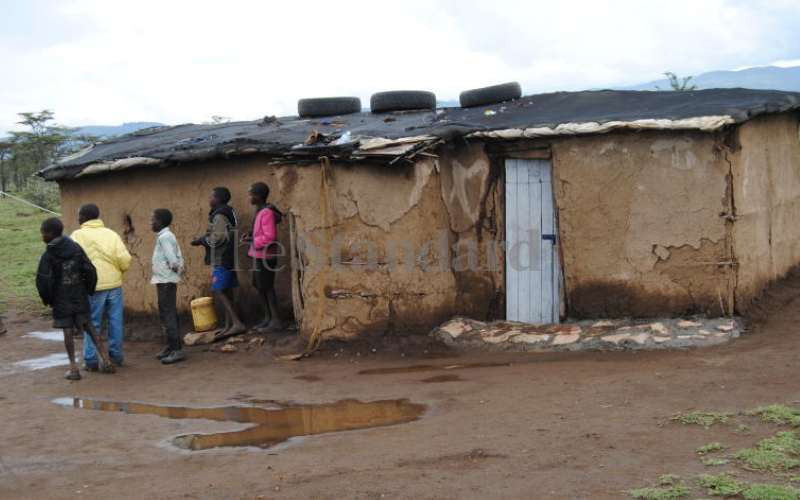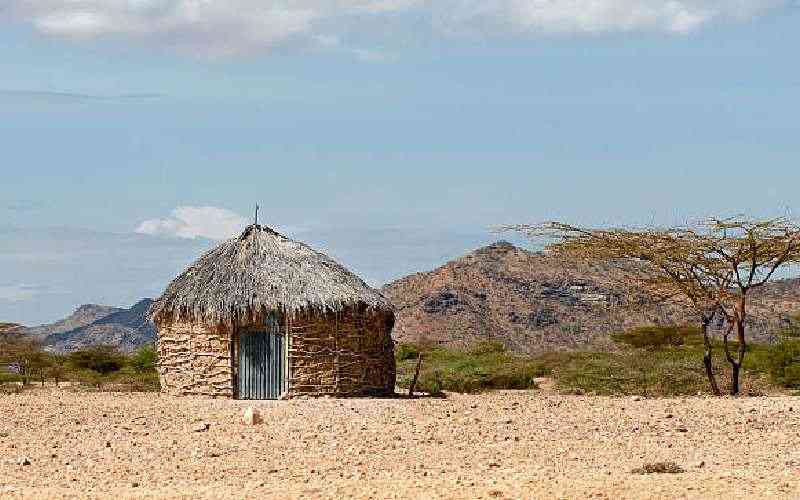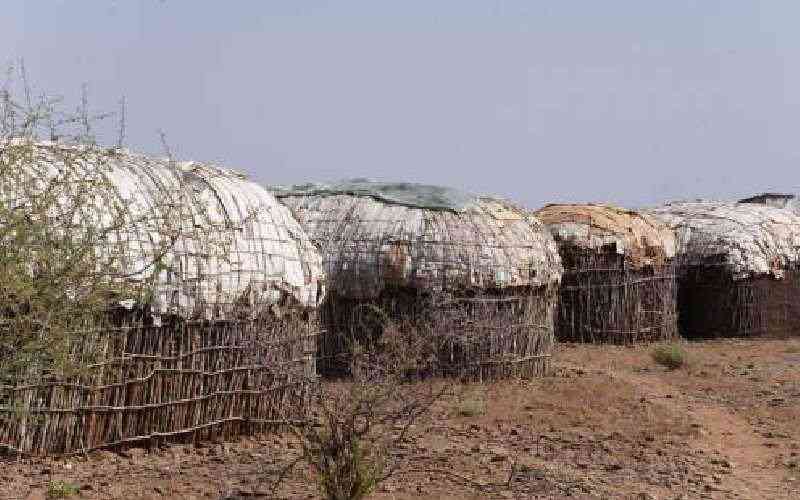
As the debate on the construction of affordable housing in urban areas rages on, millions of Kenyans living in rural areas continue to inhabit derelict structures.
Yet the focus has always been on what happens in the towns where population densities are high and economic activities are a lot more.
The previous government led by retired President Uhuru Kenyatta, prioritised affordable housing as a key pillar in its infamous Big Four agenda development blueprint. The other three pillars included affordable healthcare, manufacturing and food security.
More people live in rental houses in urban areas as compared to rural ones, however, in rural, structures are predominantly substandard.
According to The Kenya National Bureau of Standards' (KNBS) Kenya Population and Housing Census 2019, the country's estimated mean dwelling units' deficit was 8.89 million.
The proportion of households occupying rented or provided dwellings is 13.4 per cent in rural areas and 78.7 in urban areas. Yet for all those, only 87.8 per cent had durable roof material in the rural areas, with 98.6 per cent in the urban.
A mere 37.9 per cent of all dwelling units in the rural areas had durable wall material, against 72.6 per cent in the urban.
About 36.5 per cent in the rural areas had durable floor material, while a comfortable 88 per cent in the urban boasted the same. 55.9 per cent of rural households in the rural areas had access to improved sources of water against 78.9 per cent of urban households.
And only 75.5 per cent of the households in rural areas were using improved sanitation facilities, against 93.5 per cent in the urban.
Yet against these statistics, sprawls of slum areas in the urban areas cause more concern than the deplorable dwelling conditions in some of the most remote villages in the country.
Paul Syagga, a former professor of land economics at The University of Nairobi, says that while rural areas often suffer a lack of quality, the urban is hit by both quality and quantity problems.
"In urban areas, there is more congestion, more people per unit area. These people often lack basic amenities, water and sanitation. There is more space in the village and fewer resources could be used to improve the quality of the structures and life there," reckons Prof Syagga.

Although the structures in rural areas could be of very low quality, many people there are still living better than those living in congested spaces in the urban, he argues.
"The minimum requirements for a house for a household/family, according to the Kenya Housing Policy, should be a minimum of two rooms, a cooking area and a toilet," he says.
Prof Syagga was part of the team that developed these regulations and guidelines on the back of a realisation that households had an average of five persons. The minimum floor space of such houses should be 40 square metres.
He says that the government giving one-room affordable houses "is not fulfilling" and flouts these regulations.
In rural areas, due to the availability of space, it is easy to bring up a house that fits the description of a comfortable housing unit.
"The cooking area could even be outside, under a tree, and that suffices. This is impossible to have this in the urban; in the space, you want to put up a pit latrine, someone else wants to put up rentals, for that's the value for space," says Prof Syagga.
While it may seem like an entirely new concept, since independence, the National Housing Corporation (NHC) has been providing housing, explains Prof Syagga, trying to bridge the yawning housing gap. "They have put up very good quality housing, but for the middle class."
For those at the bottom of the economic pyramid, they provided site and service schemes. Here, small parcels of land were allocated and people were let build their own houses at their own pace through loans extended by The World Bank.
"One can put up a toilet, a cooking area and then rooms, for those who cannot afford to construct homes at once. This is called incremental housing," adds Prof Syagga.
The material initially used for the construction does not matter in this case. The availability of water and sanitation matters most.
"For the rural areas, they (NHC) gave rural housing scheme loans. They gave a maximum of Sh3 million. This is a loan like any other and one has to be assessed if they have the ability to repay. So this is why teachers and other civil servants were the main recipients. One was assumed to own land and a consistent income source had to be if one were to service loans," notes the land economics professor.
They also came up with alternative building materials which included stabilised soil blocks - soil blocks with 10 per cent cement - which were even used to wall some classrooms. The aim was to reduce construction costs.
Fibre-reinforced tiles, also cheaper than conventional tiles, were developed. They were nearly half the weight of the conventional tiles- 2.5 kgs against 4.5 kgs of the conventional ones- and were made up of sisal fibre mixed with cement and sand.
Rice husk ash was also developed to replace cement. These were made up of 70 per cent ash and 30 per cent cement.
"All these alternative building materials were to reduce the cost of housing by 40 per cent," he says.

But "the Kenyan attitude" of not wanting cheaper materials because of a feeling of belittlement discouraged some of the experts' best efforts that could have made better many houses in rural areas.
"For this, we could plan it (the slum) as is and only demolish 10 per cent of existing buildings for the construction of access roads and wayleaves. Owners were then encouraged to bring down their substandard houses gradually. But people wanted all of them brought down at the same time and only 700 houses were built," he says.
Governments trying to, since independence, have people become property owners, instead of renters, have fallen short of their lofty ambitions, even with even the Tenants Purchase Scheme, which aimed to replace rent paying with ownership.
Prof George King'oriah, a land economist who also taught at The University of Nairobi, says that "there is a tendency for authorities to focus only on urban housing".
"I am not sure the current county governments will alter this view. With surveying of rural housing needs, and the sociology of housing supply and demand in each county, the government can address this problem of housing in the rural areas now being neglected," he says.
"The government takes censuses of the population and the houses they occupy and assesses the capability of the current housing types to suit each county's climate. It will then suggest various methods of ameliorating the constraints of housing supply in each county, a complicated study of each county, if so needed."
That the homes the government is offering even in the urban areas are affordable, not free, means that people owning them have to have a secure and consistent source of income to finance a structured payment plan.
Players in the industry fault connection of households in the last mile to the national grid while such houses still have leaking roofs and cannot offer shelter against rains. In the countryside, there are many of these.
Nationally, the average number of persons per habitable room was 1.5 compared with the expected standard of 1 habitable room per capita, according to KNBS. The population of 47, 105, 234 persons had only32, 322, 735 habitable rooms by the census 2019.
 The Standard Group Plc is a multi-media organization with investments in media platforms spanning newspaper print
operations, television, radio broadcasting, digital and online services. The Standard Group is recognized as a
leading multi-media house in Kenya with a key influence in matters of national and international interest.
The Standard Group Plc is a multi-media organization with investments in media platforms spanning newspaper print
operations, television, radio broadcasting, digital and online services. The Standard Group is recognized as a
leading multi-media house in Kenya with a key influence in matters of national and international interest.

